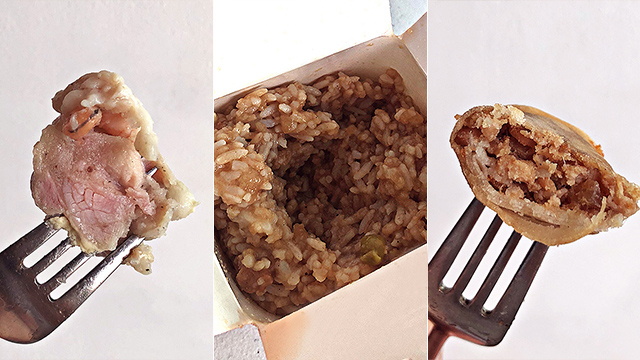
(SPOT.ph) Ask any Cebuano about “steamed rice,” and watch their eyes light up as they struggle to explain what it really is. In case you’re also wondering, the short answer is no, of course we’re not talking about “plain rice.” Steamed Rice is the dim sum staple that changed the game. You can even just say “dim sum,” and we’ll automatically think of this particular dish. You can find it in Chinese-inspired food stalls, but the most popular places to get this are all part of the Harbour City Group.
It's common knowledge around these parts that Dimsum Break, Harbour City, Ding How, and Ding Qua Qua are all owned and operated by the same family (Ding Qua Qua's been on hiatus since early 2021 but is dropping hints of a comeback on its social media pages; it's still closed as of writing). In spite of that, everyone still has their favorites—but no one can actually tell you why! That doesn’t stop people from having their own theories, though.
The owners, the Kokseng family, have explained that the differences in the brands are in their categories. Their menus, on the other hand, all virtually have the same items, except they’re mixed and matched into different meal sets.
Even if everyone has their own defaults, a typical order includes Steamed Fried Rice (and we’ll get to explaining what it really is in a bit), a little something from the bamboo steamers, and something else from the fried section—maybe even Xie Ping shaved ice, buchi, or a Mango Fruit Cream to round out the meal. For this experiment, we chose Quail’s Egg Shaomai and Spring Rolls to accompany the Steamed Fried Rice. The dishes chosen are also listed as bestsellers on the company’s website and on the Grab app.
The Contestants
Ding How Dimsum House is the OG Harbour Group restaurant. It opened in 1969 on Colon Street in Downtown Cebu. Back then, this was the place for basically everything. (Colon remains to be a busy street, but life has expanded to various places in the city.) As of the taste test, this restaurant has only one operational branch. It’s the only one that serves larger portions for family-style dining.
Harbour City Dimsum House is your typical dim sum restaurant. After you’re shown to your table, carts of dim sum are then wheeled to you. There’s one cart for steamed items, another for fried items, and occasionally, there’s one for refreshments. This brand has 11 branches, four of which are outside Cebu.
Dimsum Break is the fast-food chain of the group. You get yourself a tray and head to the counter where you choose the items in front of you before they ring up your bill. You then pay before sitting down to enjoy your meal. Despite this brand not being touted as the flagship, it has the most number of branches. We counted 23 on their website.
All dishes were sampled as they were when they arrived, without reheating. They were also ordered on the same day, after lunch and before the dinner rush to give the restaurants the best chances to get the little details right.
Round 1: Original Steamed Fried Rice
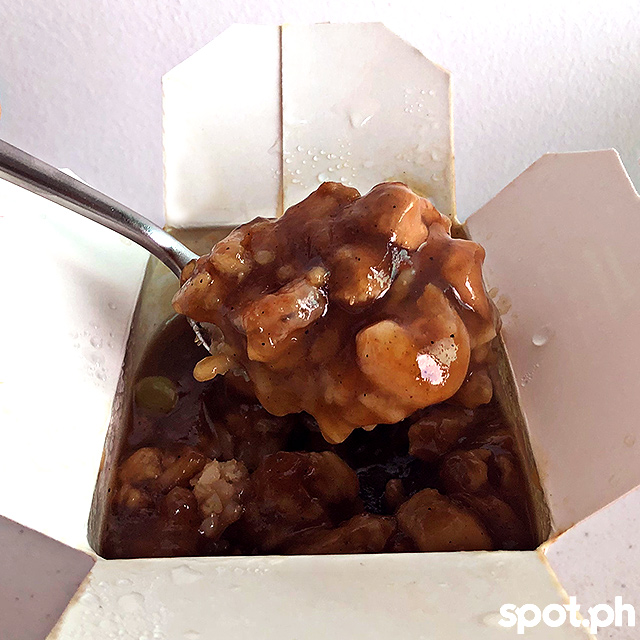
According to their website, the Harbour Group created this famous fried rice, but they’re pretty vague when it comes to describing it. They only say it’s “a perfect combination of savory pork and shrimp toppings over seasoned fried rice.” They don’t talk about the thick translucent brown sauce that’s way more present in our minds than the shrimp. (The whole pieces of tiny shrimp are undoubtedly there, but it’s not an identifying feature. Just like the random green peas floating around the sauce.) There’s also no mention of what the rice was fried in or with. A peek behind the counter at Dimsum Break, or poking around your bowl before mixing it, will reveal that the rice is stained light brown in varying degrees. Only the sauce contains meat or any other visible ingredients. As for the pork, they used a mix of different cuts. The sizes of the chunks of meat and the amount of sauce varied.
The closest thing you could compare this to is Hokkien fried rice. Or something similar to maki but on rice, instead of noodles—except it smells different and the meat is diced. Maki is soy sauce-based and white pepper-forward, but Steamed Fried Rice’s prominent flavor is quite hard to identify. Of course you could guess that the sauce has all the staples like soy sauce, garlic, pepper—maybe even oyster sauce, chicken stock, ginger, peanut oil, and cornstarch—but no one we’ve asked has been able to name a main spice or herb. It does seem to have the mild aroma of garlic powder, as opposed to the kick of fresh garlic. Other than that, it also tastes meaty without feeling heavy on the palate. Because of this, we guessed it could be some kind of umami enhancer. Whatever it is, it’s very agreeable and pleasant. There’s even a hint of sweetness to it—something Cebuanos, and all Filipinos in general, love, right?
The Steamed Fried Rice comes in Original and Spicy. You’re supposed to mix it all in before tucking in, because there’s nothing worse than a patch of dry rice towards the end of the meal.
Steamed Fried Rice (P91) from Ding How
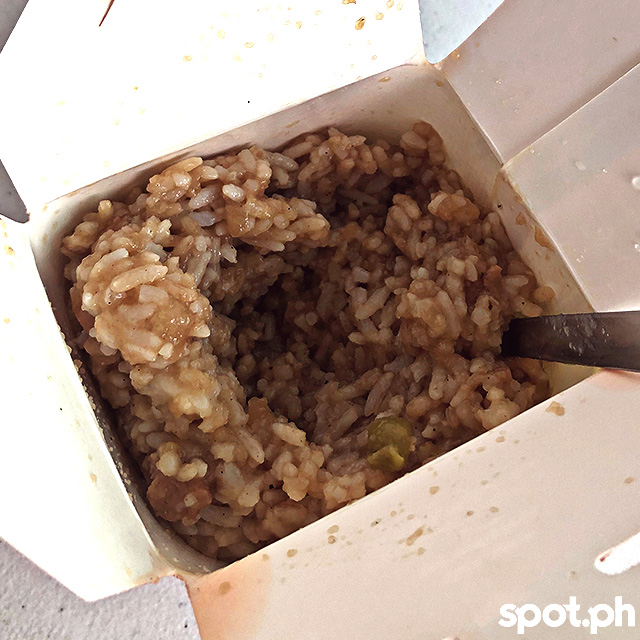
This had the most generous amount of sauce, but not necessarily more meat. The rice was visibly paler than the other two—less fried—but this didn’t seem to matter much once the sauce was mixed in. This was also the sweetest of the bunch. It was the most fragrant of the pack, but that didn't translate to flavor.
Original Steamed Fried Rice (P88) from Harbour City

Taste- and smell-wise, this was noticeably less fresh than the others, which was really unexpected knowing that this branch is in a major mall. Its sauce was the lightest in color. It also had the least sauce, making it the most dry and bland compared to the others.
Dimsum Break (P92 on Grab, price varies)
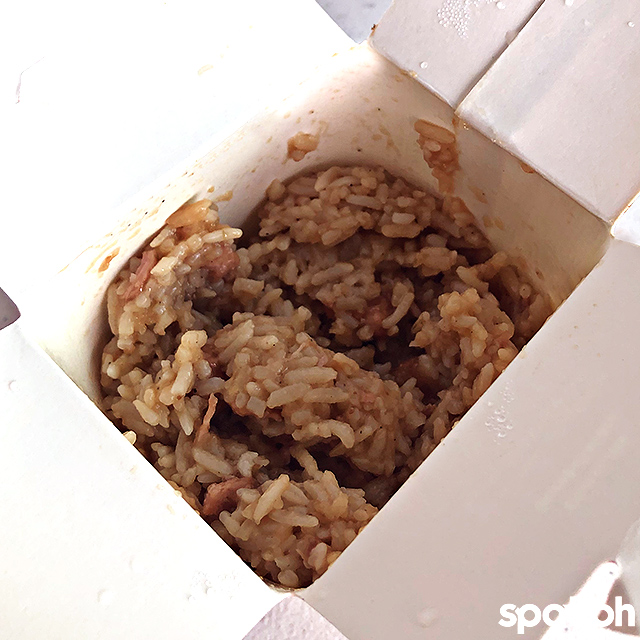
At first glance, this was darker than the rest, which is kind of an unremarkable feature. But when everything was mixed, we discovered that this had a good sauce-to-meat-to-rice ratio and was more peppery than the rest. This little boost in flavor made it the top pick for this category.
Winner: Dimsum Break
Runner-up: Ding How, a close second
Round 2: Quail’s Egg Shaomai
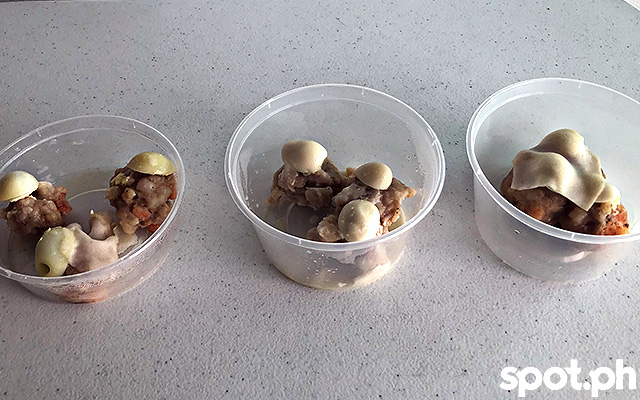
Unlike the quail-egg siomai of UP Diliman, the Quail’s Egg Shaomai here doesn’t have an entire egg inside it. Instead, it has half an egg on top of the siomai. The siomai base is the same for all varieties (Original, Mushroom, and Spicy), which has shrimp, pork meat and fat. The siomai is soft and occasionally you’ll cut into a chunk of pork meat. Shrimp, fat, and the generic ground meat are much more common bites, so it’s generally a uniform texture.
Flavor-wise, it’s quite similar to the Steamed Fried Rice. The mystery spice as well as the garlic powder are also present here as the main flavors, except the siomai is more shrimpy than the fried rice. There’s also a slight sweetness to the dumplings, and they’re well-seasoned enough to eat on their own. Of course you can still have it with the rice or your preferred dip. When eaten with the Steamed Fried Rice, it’s as though the siomai echoes the flavors they share while amplifying the salt and hebe flavor.
The restaurants included chili oil with the order of siomai. It surprisingly tasted like dried seafood as well as salty black beans, green onion, garlic, and chili. It’s worth mentioning that the solids in the chili oil carry a strong salty, briny flavor, while the oil itself brings a creeping but lingering heat. As a whole, the sauce is savory and piquant.
Quail’s Egg Shaomai (P89) from Ding How
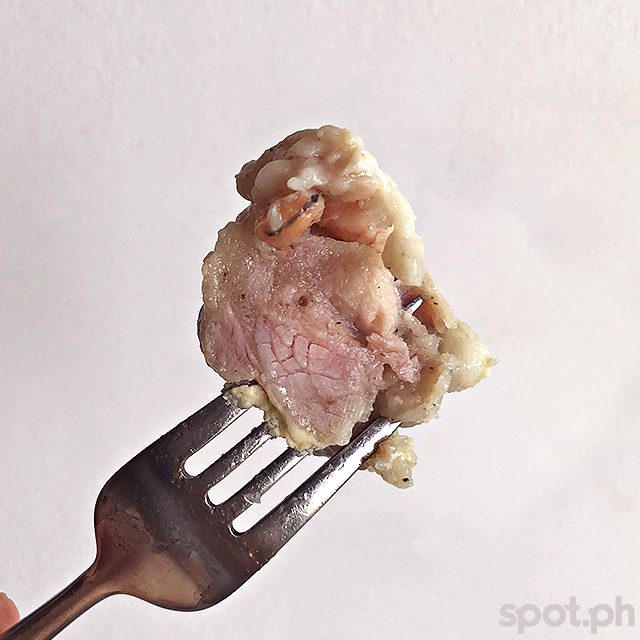
It’s rare that the Shaomai look this good, but these arrived in perfect condition, even when dining in. The three dumplings were huddled together and the little square of dough that blanketed them was intact. The eggs were also cooked just right; no condensation whatsoever. Notably, it tasted almost the same as Dimsum Break’s.
Quail's Egg Shaomai (P86) from Harbour City
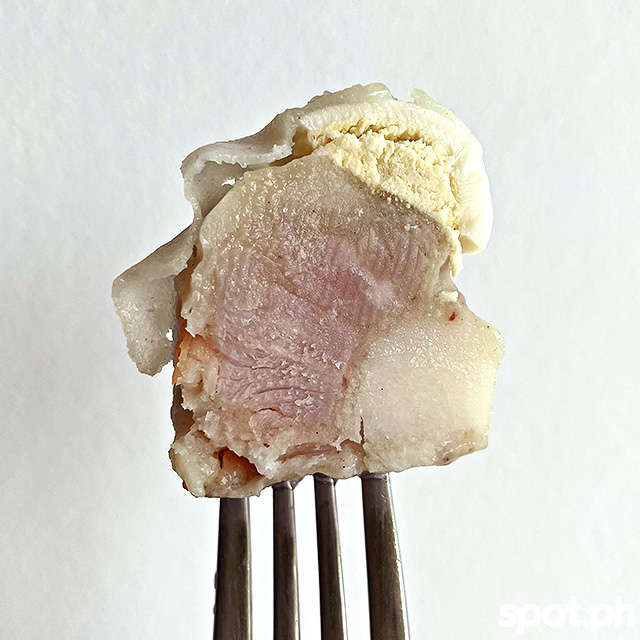
At this point, it’s safe to say that this wasn’t a good day for this branch’s kitchen. The Shaomai also smelled and tasted a tad bit off. Perhaps we wouldn’t have picked up on it if it was piping hot from the steamer or the microwave, but sampling them side-by-side as they were when they arrived, this flaw was perceptible. The lack of freshness really took away from our enjoyment of this dish.
Quail's Egg Shaomai (P90 on Grab, price varies) Dimsum Break
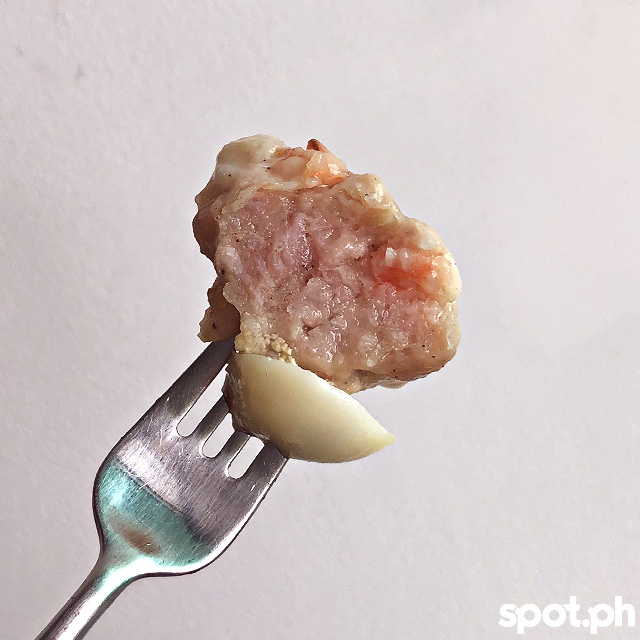
These Shaomai looked like they spent some extra time in the steamer. The egg was wet with condensation, and it was nowhere near photo-ready. (We put the eggs back on the dumplings for the photo.) Taste-wise, they were fine though, on par with the rest. It was at this point that it was clear that these restaurants were getting their food from the same commissary; only the preparation differed. Deep into tasting, the flavors of Dimsum Break’s and Ding How’s melded into one, but this was ever so slightly more fragrant.
Winner: Ding How
Runner-up: Dimsum Break
Round 3: Spring Rolls
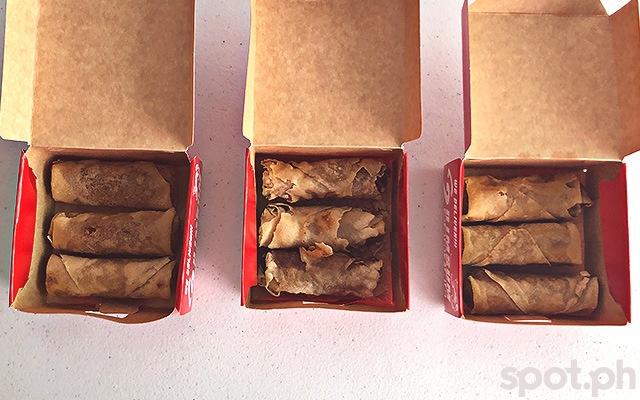
Not to be confused with the Beef Spring Rolls or the Vegetable Spring Rolls (also items on their menus), Spring Rolls are the go-to fried order. There’s a reason that it outshines the other lumpia variants; it just tastes better. These rolls have an unexpected beefy flavor, like well-cooked ground beef. This is unexpected because a lifetime of eating lumpia shanghai has conditioned us to think that pork fat is usually the most prominent protein component. For these rolls, the vegetables are there—you can see the orange carrot bits—but you can’t really taste them. Texturally, you can feel the ground meat, a bit of fat, and the wrapper, which was sadly missing the crunch.
Eating the Spring Rolls on their own was a bit of a let down; they were kind of bland and could’ve used more salt and spices. And because we tasted them as they were when they arrived (soggy and way past their peak), it was easy to see where they fell short. They desperately needed their partner, the super-saturated orange sweet and sour dip. The dip is a bit sweet and mostly sour. It’s a very sharp tang, sure, to get rid of your umay, or bidli as we say in Binisaya. There’s also a hint of flavor in them, but it’s too mild to tell exactly what it is. The dips from all three restaurants tasted exactly the same. Together, the result is a mix of the beefy flavor with a really bright sauce that acts almost like a palate cleanser.
Having eaten them like this, it’s become clear that they’re especially enjoyable in the restaurants, because the crunchiness of the lumpia and the acidity of the dip provide a counterpoint to the softness of the rice and the siomai. The former keeps the meal from turning monotonous and boring, while the latter provides enough salt and seasoning so the former’s faults aren’t apparent. If you’re ordering takeout, we really suggest you reheat them in the oven to make sure you’re getting the best experience. One order is three pieces.
Spring Rolls (P85) from Ding How

These looked perfectly fried, so it held the most promise. However, cutting into them, there was no crunch at all. Overall, it was unremarkable.
Spring Rolls (P82) from Harbour City

These rolls looked like they spent more time in the fryer. The wrapper was broken in parts and were sticking out like shards. That was a minus from the start, but cutting into them, the crunch was audible. There was a glimmer of hope there, until we saw the pool of oil at the bottom of the container.
Spring Rolls (P89 on Grab, price varies) from Dimsum Break
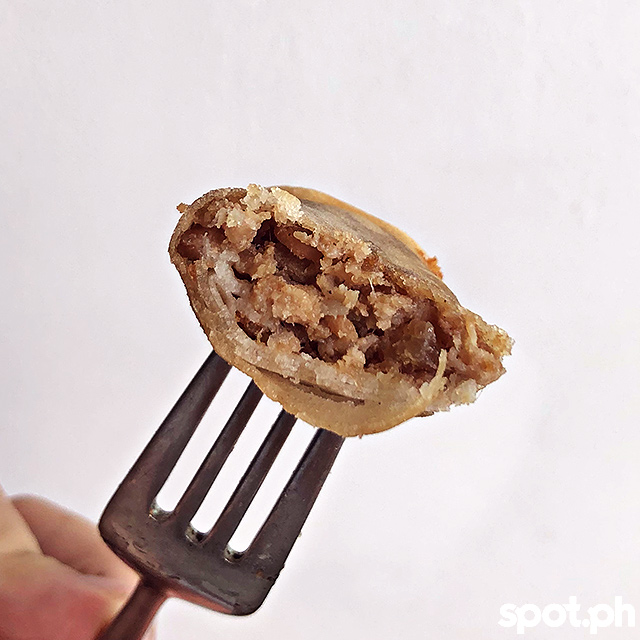
We’re sad to report that was the limpest of the bunch. It was kind of soggy, but at least it wasn’t greasy. This could come alive again if it spent time in the oven or an air fryer.
Winner: None
We all know by now that fried lumpia rolls don’t keep or travel well, but we still had to try what this dim sum staple would be like from the comforts of home. Unless you’ll reheat it in an air fryer, it’s best to save them for a dine-in experience. All three tasted virtually identical in their cold state.
Verdict
All restaurants' dishes pretty much tasted the same—and no, it didn’t feel like they cut corners for branches that were a fraction cheaper than the rest. It was clear that they were all following the same recipe—when they weren’t being supplied by the same kitchen, that is. (The company does say on their website that they established the Harbour City Group Commissary as early as 1988.)
Dimsum Break wins by a hair. Their Steamed Fried Rice was the best of the bunch, and this was where the differences were more stark. We’re able to forgive their sweaty Shaomai because the presentation didn’t affect the taste anyway. Besides, we know the bamboo steamers wouldn’t have trapped moisture like the plastic takeaway containers.
Ding How is a close second, while it seemed like an off day for Harbour City. It has to be said that all restaurants were responsive via SMS and ordering for pick-up was a breeze. Harbour City had the quickest response time among the three; they also got the most details right. Dimsum Break was ordered via Grab Food. (As of writing, Harbour City and Ding How are now available on Grab Food, but weren’t at the time of tasting.)
For orders and more information on Ding How, Harbour City, and Dimsum Break, visit their website.
[ArticleReco:{"articles":["87599","87597","87594","87585"], "widget":"What Everyone's Reading Now"}]
Hey, Spotters! Check us out on Viber to join our Community and subscribe to our Chatbot.
Source: Spot PH
No comments:
Post a Comment